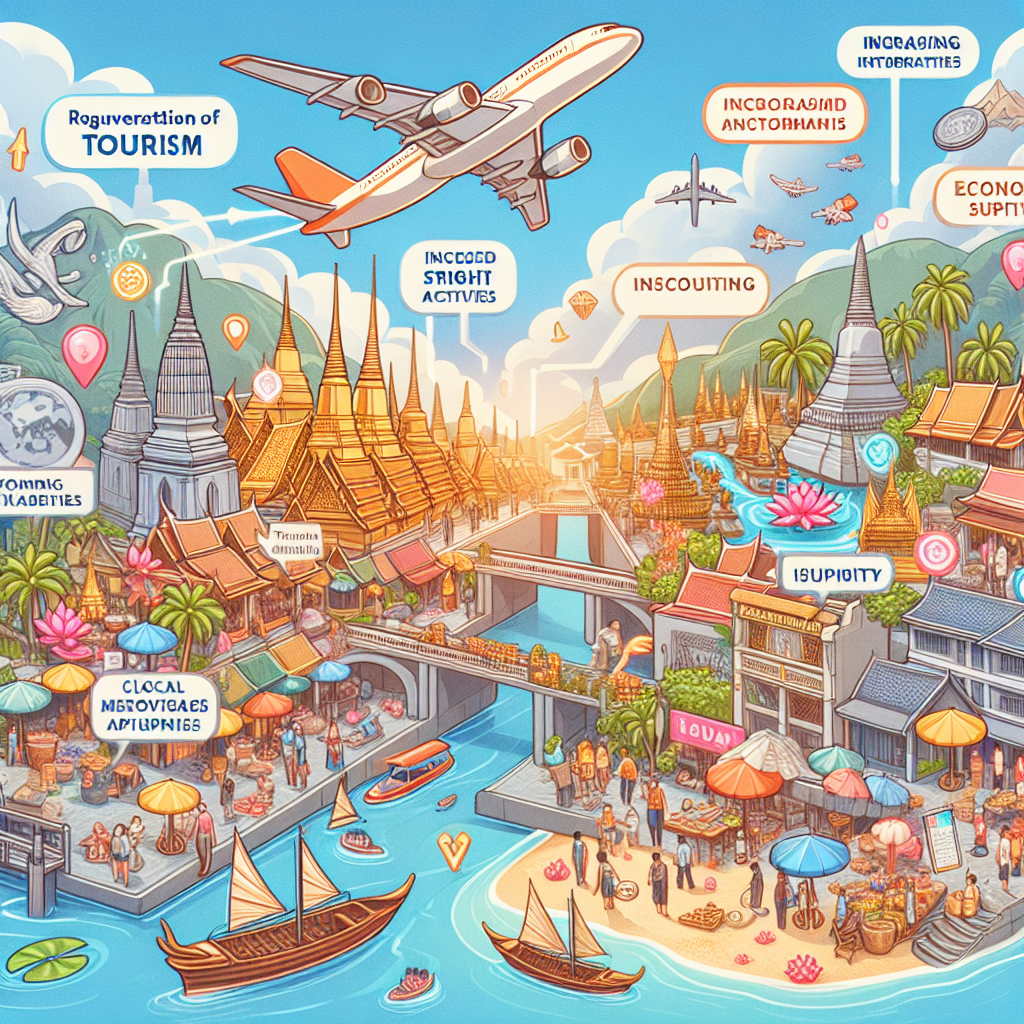Thailand’s Tourism Recovery: Economic Impact and Investment Opportunities

As the world emerges from the shadows of the pandemic, Thailand’s tourism sector is on a path to recovery, presenting significant economic impacts and investment opportunities. With its stunning beaches, rich culture, and vibrant cities, Thailand has long been a favorite destination for travelers. However, the COVID-19 pandemic severely disrupted this thriving industry. In this article, we will explore the current state of Thailand’s tourism recovery, its economic implications, and the potential investment opportunities that arise as the country reopens its doors to the world.
The Current State of Thailand’s Tourism Recovery
Thailand’s tourism recovery is gaining momentum, with the country welcoming millions of international visitors in 2023. According to the Tourism Authority of Thailand (TAT), the country recorded approximately 11 million foreign arrivals in the first half of 2023, a significant increase compared to the previous year. This resurgence is attributed to the easing of travel restrictions and the global demand for travel experiences.
Despite the positive trends, challenges remain. The tourism sector is still grappling with labor shortages and the need for infrastructure improvements. However, the government is actively working to address these issues by investing in training programs and enhancing transportation networks.
Key Statistics on Tourism Recovery
To understand the scale of Thailand’s tourism recovery, consider the following statistics:
- In 2022, Thailand’s tourism revenue reached approximately $50 billion, a 60% increase from 2021.
- The average length of stay for tourists in Thailand is now around 8.5 days, indicating a growing interest in extended travel experiences.
- Domestic tourism has also surged, with over 150 million domestic trips recorded in 2022, showcasing the resilience of the local market.
Economic Impact of Tourism Recovery
The recovery of Thailand’s tourism sector is crucial for the country’s overall economic health. Tourism contributes significantly to Thailand’s GDP, accounting for about 20% of the total economy. As international travel resumes, the influx of tourists is expected to stimulate various sectors, including hospitality, retail, and transportation.
Moreover, the tourism sector creates millions of jobs, directly and indirectly. According to the World Travel & Tourism Council (WTTC), the sector supported over 4 million jobs in Thailand in 2022, and this number is projected to grow as tourism continues to rebound.
Investment Opportunities in Thailand’s Tourism Sector
As Thailand’s tourism industry recovers, numerous investment opportunities are emerging. Investors can explore various avenues, including:
- Hospitality Development: With the demand for accommodations on the rise, investing in hotels and resorts can yield significant returns.
- Eco-Tourism: There is a growing trend towards sustainable travel, making eco-friendly resorts and tours attractive investment options.
- Digital Transformation: Investing in technology solutions for travel agencies and hospitality services can enhance customer experiences and operational efficiency.
Addressing Common Misconceptions
One common misconception about Thailand’s tourism recovery is that it will take years to return to pre-pandemic levels. While the recovery process is ongoing, the rapid increase in tourist arrivals and spending indicates that the sector is rebounding faster than many anticipated. The government’s proactive measures and the resilience of the Thai people play a crucial role in this swift recovery.
“Thailand’s tourism sector is not just bouncing back; it’s evolving to meet the new demands of travelers,” says TAT Governor Yuthasak Supasorn. “We are committed to creating a sustainable and inclusive tourism model.”
Real-World Examples of Recovery
Several regions in Thailand have successfully adapted to the changing landscape of tourism. For instance, Phuket has implemented a “sandbox” program that allows vaccinated tourists to visit without quarantine, leading to a surge in visitors. This initiative has not only boosted local businesses but also set a precedent for other regions to follow.
Another example is Chiang Mai, which has embraced eco-tourism by promoting its natural attractions and cultural heritage. This approach has attracted a new demographic of travelers interested in sustainable experiences, further diversifying the tourism market.
Conclusion
Thailand’s tourism recovery is a testament to the resilience of its economy and the adaptability of its tourism sector. With significant economic impacts and a wealth of investment opportunities, the future looks promising for both local businesses and international investors. As Thailand continues to welcome travelers, the question remains: How can stakeholders leverage this recovery to create a more sustainable and inclusive tourism model? The time to invest in Thailand’s tourism sector is now, as the country stands on the brink of a new era in travel.





